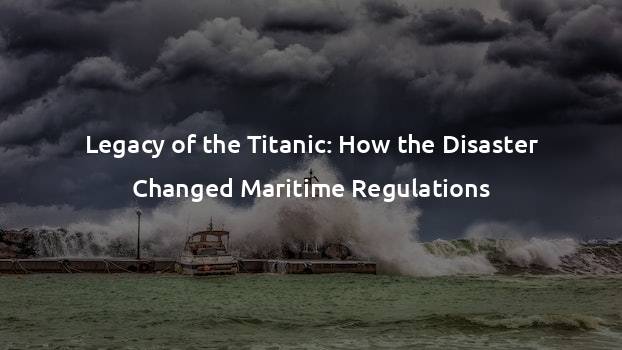Legacy of the Titanic: How the Disaster Changed Maritime Regulations
The Legacy of the Titanic: How the Disaster Changed Maritime Regulations
Introduction: The sinking of the Titanic on April 15, 1912, remains one of the most infamous maritime disasters in history. The tragic event claimed the lives of more than 1,500 passengers and crew members and had a profound impact on maritime regulations. In the wake of the disaster, the world recognized the need for stricter safety measures to prevent such a catastrophic event from happening again.
The Historical Context
The Titanic, touted as the “unsinkable” ship, embarked on its maiden voyage from Southampton to New York City. However, disaster struck when the luxury liner collided with an iceberg in the North Atlantic Ocean, leading to the loss of numerous lives. This shocking event revealed several inadequacies in maritime regulations and highlighted the urgent need for change.
The Birth of SOLAS
In response to the tragedy, the International Convention for the Safety of Life at Sea (SOLAS) was established in 1914. SOLAS aimed to improve maritime safety standards and prevent accidents at sea. It introduced a framework of rules and regulations for ships, focusing on areas such as ship construction, life-saving equipment, fire safety, and radio communications. SOLAS has undergone several revisions over the years and continues to play a vital role in shaping international maritime regulations.
Ship Design and Construction
One of the major lessons learned from the Titanic disaster was the need for improved ship design and construction. Prior to the tragedy, ships were primarily constructed with a focus on luxury and speed rather than safety. SOLAS introduced stricter regulations, requiring ships to have watertight compartments and double hulls, which would help prevent the rapid flooding experienced by the Titanic. The convention also set standards for stability and buoyancy, ensuring that ships could withstand severe weather conditions.
Life-Saving Equipment
Another significant change brought about by SOLAS was the requirement for adequate life-saving equipment on board ships. The Titanic had a shortage of lifeboats, which resulted in the loss of countless lives. SOLAS mandated that ships must carry enough lifeboats and life rafts to accommodate all passengers and crew members, ensuring their safe evacuation in the event of an emergency. Furthermore, the convention emphasized the need for regular lifeboat drills and crew training to enhance preparedness and efficacy during emergencies.
Radio Communications and Ice Warnings
The Titanic disaster exposed the flaws in radio communication systems. Despite receiving multiple warnings from other ships about icebergs in the area, the Titanic’s radio operators were preoccupied with transmitting passenger messages rather than relaying crucial ice warnings to the crew. SOLAS stepped in to address this issue by mandating that ships have 24-hour radio watch and dedicated operators solely responsible for monitoring distress signals and communicating important information to the crew. This measure significantly improved communication and ensured that ice warnings and distress signals were promptly relayed to ships in danger.
The Long-Term Impact
The legacy of the Titanic disaster extended far beyond the immediate implementation of SOLAS. The tragedy prompted a global shift towards better maritime safety. Governments around the world started instituting their own regulations, often mirroring the standards set by SOLAS. Shipbuilders began prioritizing safety in their designs, and advanced technologies such as radar and sonar were developed to enhance navigation and collision avoidance.
Today, the maritime industry operates under robust regulatory frameworks, which owe a debt to the lessons learned from the Titanic. Organizations like the International Maritime Organization (IMO) continue to monitor and enhance maritime safety standards, ensuring that future disasters are prevented to the greatest extent possible.
TL;DR
The sinking of the Titanic in 1912 led to a significant transformation in maritime regulations. The establishment of SOLAS introduced stricter rules for ship design, life-saving equipment, and radio communications. These regulations aimed to prevent accidents at sea and enhance passenger and crew safety. The impact of the Titanic disaster transcended immediate changes, shaping the long-term focus on safety within the maritime industry.







